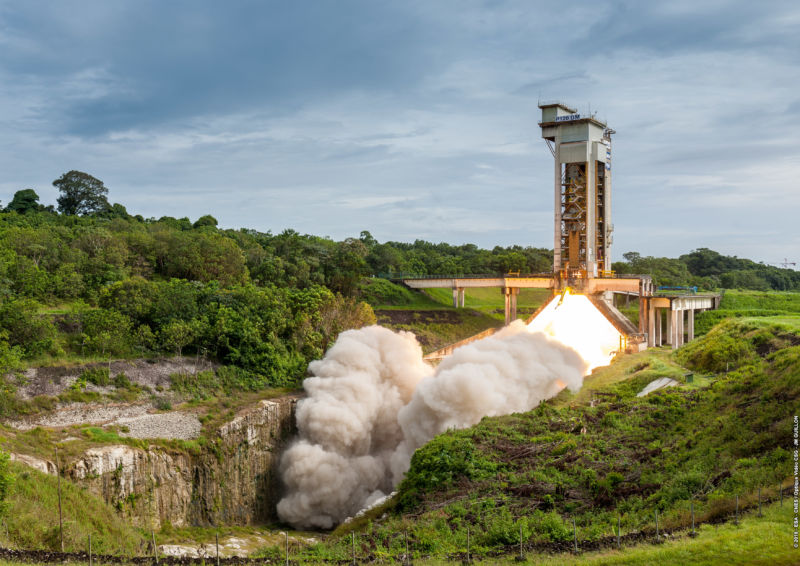As the SpaceX steamroller surges, European rocket industry vows to resist

Enlarge / First hot firing of the P120C solid rocket motor that will be used by Europe’s new Vega-C and Ariane 6 rockets. (credit: ESA/CNES)
KOUROU, French Guiana—White light flooded in through large windows behind Alain Charmeau as he mused about the new age of rocketry. The brilliant sunrise promised another idyllic day in this beach town, but outside the sands remained untroubled by the feet of tourists.
Lamentably, the nearshore waters of this former French colony are chocolate rather than azure, muddied by outflow from the Amazon and other rivers. French Guiana has other compensating assets, however. It lies just 5.3 degrees north of the equator. Neither tropical cyclones nor earthquakes threaten the area. And its coast offers untrammeled access to both the east and north. These natural gifts have helped this remote region become one of the world’s busiest spaceports.
From here, Europe has established a long but largely unheralded history in the global rocket industry. Nearly three decades ago, it became the first provider of commercial launch services. If your company or country had a satellite and enough money, Europe would fly it into space for you. Remarkably, more than half of all telecom satellites in service today were launched from this sprawling spaceport.
Read 87 remaining paragraphs | Comments
https://arstechnica.com/?p=1341357



